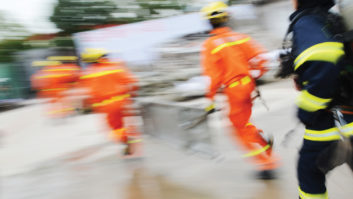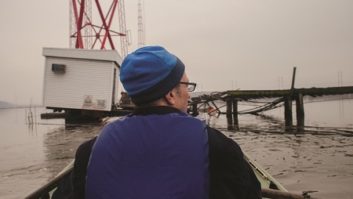I want to clarify the status of broadcast engineers as to emergency responder status. I have some knowledge about the subject, at least as someone who: lives or work in the state of Indiana and is a member of the Indiana Broadcasters Association; works as an engineer or IT professional responsible for the continued transmission of their designated stations and, by extension, the EAS system; and has completed the required training and seminars provided by the IBA, Department of Homeland Security, Indiana DHS and Federal Emergency Management Agency, as outlined and required by Indiana law.

These requirements being met qualifies a person to be present during an emergency, but only in the capacity of keeping the EAS system and their relevant facilities on-air. In Indiana, someone who has met all these qualifications is also issued a card by the IBA for status ID, similar to the old one of mine shown here.
This applies to federal, state and local emergencies of all types. A good example: It assures the right to freely travel the roads during a snow emergency, which is the most common type declared in my work area.
We had to pass about four hours of online training and testing before the initial seminar, just to qualify to attend. The seminar was held at the Peru Ivy Tech campus in 2015. Representatives were present from the state police, IDHS, DHS, FEMA and the local sheriff, who also served as the area’s EMS director. There were approximately 45 broadcast chief engineers, assistant engineers and several IT engineers in attendance.
Some discussion in the seminar focused on issues you might not expect. All of the agencies wanted assurance that the engineers themselves were going to be the only ones at the scene of an emergency. Their biggest fear was that they would be exposing themselves to GMs, reporters, live video or any “coverage” at the site of a potentially chaotic and dangerous scene. Besides the obvious PR problems, they were most concerned with the liability of entrance to a site by untrained people with no business being there.
The engineers all laughed, including me. The GM on-site at a transmitter meltdown? An engineer’s worst nightmare — not likely to happen.
WHY RESPONDERS, NOT INFORMERS
The status of “emergency responders” over “first informers” was conferred upon us after that seminar, by said agencies, due to these facts:
1. Many broadcast engineers are going to be the ones who first know about an emergency. A weather emergency, for example, would often be first noted by engineers when their transmitters go off the air or onto backup power during the weather event.
2. They will often be on-site before an emergency can be declared. That is because the “machines” can call them for assistance when there is a problem. A typical engineer drops whatever they are doing and goes immediately to the site.
3. When asked how many of us were on 24/7 call-ins, every single engineer raised their hand.
4. When asked how many of those midnight calls were from an automated machine at a studio, facility or a remote transmitter remote site, every engineer raised their hand for “always.”
5. If an engineer isn’t there when there is a problem to make the station work, the closest source of an EAS broadcast to said disaster cannot be used to declare a local public, state or even national emergency in the first place.
6. Great emphasis was put upon the public EAS system, how the engineers actually “own and operate” this system and are the ones directly responsible for its continued and accurate response to a wide variety of emergency situations.
If you really want the scoop, Gwen Piening, former director and lobbyist for the Indiana Broadcasters Association, is the one to ask. Now retired, she is the one who shepherded the laws that put this system in place. We engineers all miss Gwen — she is a force of nature.
Comment on this or any story. Email [email protected] with “Letter to the Editor” in the subject field.












